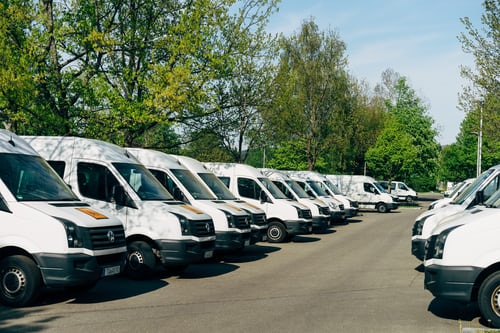Regardless of its size, managing a company fleet is a very costly and demanding process. This fact is very troubling since this sector makes an essential part of the supply chain and we simply can’t afford any unnecessary cuts or ill-judged moves – no matter how good we are at what we are doing, our companies are going to experience problems if we are not able to deliver our products in time.
Let us take a look then at a couple of ways we can save money and make our fleets leaner and more sustainable while still keeping their efficiency at 100% and being able to deliver our products in time.
Educate the drivers
Even if you have the best vehicles and the best management in place, you won’t be able to achieve the optimal level of efficiency if your drivers are not using the vehicles in the most efficient manner. So, start the overhaul by making sure all the employees are familiar with the rules of economic driving, able to optimize the routes, don’t rely on idling and coasting. Details like these can drastically reduce the fuel consumption and the amount of effort you need to put into maintenance. If possible, responsible driving habits should be encouraged with small incentives.
Decide on the appropriate ownership model
Most companies out there feel that the only appropriate model of running the fleet is to simply acquire the vehicles that are later run by assigned employees. However, this is only one of the ownership models and not always the most sustainable one. The other options you have on the table are as follows:
- Pool cars – Used by all employees as long as the vehicle is available. They offer excellent flexibility but need to be picked up where they’re left by the last driver.
- Grey fleets – The vehicles are owned by employees but partially or fully used for business. This option drastically cuts the acquisition costs but makes maintenance and monitoring somewhat hard.
- Leased vehicles – The management and maintenance are made much easier but the vehicles are tied to a contract.
Pay attention to maintenance
The vehicles that are not properly maintained produce much higher costs than the ones in pristine shape. So, make sure that your fleet is regularly inspected and the cars are repaired in the shortest possible time frame. With that in mind, it would be a good idea to reach out to local repair shops and make sure you always have an available slot. If you, for instance, own a company in New South Wales, Australia, you should look for a reliable car service in Sydney as soon as possible since queues in metropolitan areas can be quite long.
Cut the number of miles traveled
This measure may sound harder than it actually is but it basically boils down to two basic measures – monitoring and personal-use policies. We already addressed the latter mention. As for the monitoring, the present-day market offers numerous platforms for GPS tracking, improved route planning, and other telematics solutions so you shouldn’t have too much problem imposing a higher level of control over the crossed mileage. Also, you can try to set up the fuel cap you are willing to cover to motivate the drivers to find a more efficient way to make deliveries.
Lower the acquisition costs
When taking a look at the TCO (Total Cost of Ownership), price deprecation stands as one of the biggest expenses fleet managers need to deal with. With that in mind, we have to point out that the regular low acquisition strategies for assembling the fleet are not always the most prudent option since not all cars depreciate at the same rate. For instance, the subcompact sedans may cost less than the mid-size ones but their price also deprecates more which results in higher TCO. Also, pay attention to national and retail incentives since they can produce considerable savings.
These few tips are far from a complete story but they should give you a good general insight into the strategies you can use to save money while maintaining the efficiency of your fleet. All companies need to be able to move swiftly and deliver their products to the customers in the shortest possible time. Still, this advantage can be leveraged only if our fleets are operating efficiently and sustainably. The examples we gave you are an excellent starting point for reaching this higher goal.

